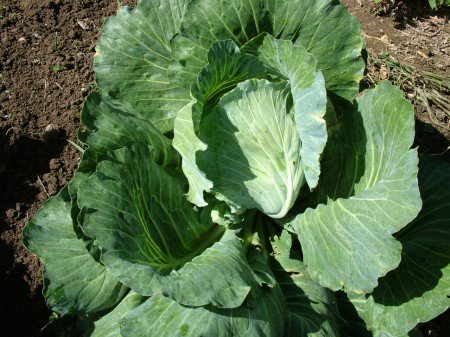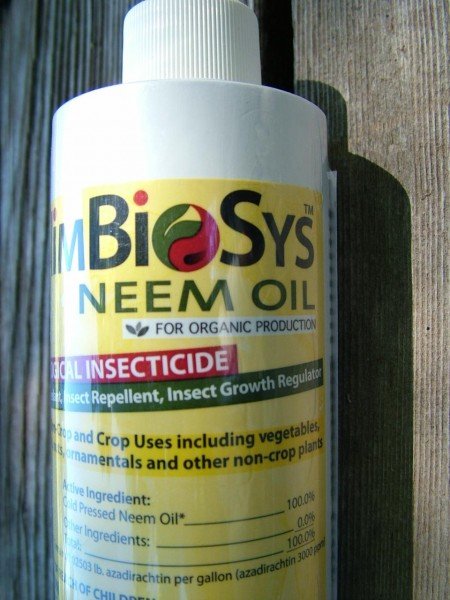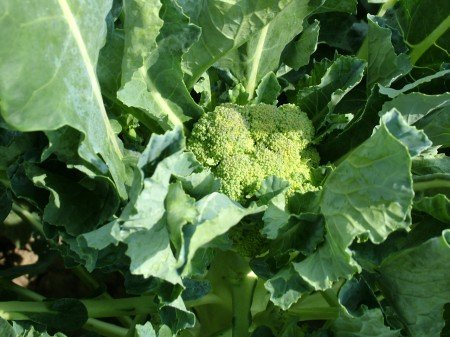I’ve done battle with the caterpillars of the small white and yellow cabbage butterflies for as long as I’ve gardened. The most destructive caterpillar, known as the Imported Cabbage Worm, is from a white butterfly native to Europe called the Cabbage White Butterfly (Pieris rapae). These insects have only been in North America since the 1860’s, but they like it a lot on this side of the ocean and are a truly destructive pest.
The small green caterpillars of this butterfly will decimate unprotected cole crops. Their presence is very easy to see. They eat huge holes in the leaves of the brasiccas, they like to burrow into the center core of cabbages, and they leave trails and piles of frass wherever they occur.
A lot of gardeners use BT (Bacillus thuringiensis) as an organic control. BT is widely used but I’ve left it alone mainly because of issues relating to its use in genetic engineering and several other possible problems, an overview of which you can read about here:
My best success has been using floating row covers of agricultural fabric. The row covers have some problems, however. The fabric tears easily and the moths find their way into and under the covers through the holes and any edges that might not be secured closely to the ground. The covers are a pain to maintain and keep in place. And it gets quite a bit hotter and more humid under the row covers than in the open air. Brassicas prefer it cooler and drier.
Then we found neem. I’d heard about neem oil over the years. Three years ago at a Garden Writers Conference in Oklahoma City, Geoff and I attended a presentation where the origins and insecticidal properties of this natural product were explained in depth. And two years ago, at the MOSES Organic Farming Conference in La Crosse, Wisconsin, Geoff met Usha Rao of The Ahimsa Alternative, and we obtained a supply of neem oil to test in our own gardens.
Neem oil is a vegetable oil pressed out of the fruit and seeds of the neem tree, Azadirachta indica, a fast growing tree of the mahogany family that is farmed in India, Pakistan, and Bangladesh, as well as throughout a lot of Africa. All parts of the tree have useful properties and many people in India regard the tree as sacred. Within the oil is an active ingredient Azadirachtin, which disrupts the digestive and molting processes of insects that feed on leaves where the oil is present and they eventually die after ingesting the neem.
I’m using a mixture of one tablespoon neem oil, 3/4 tablespoon of liquid horticultural soap, and one tablespoon of seaweed extract in a gallon of water. The seaweed is there to help the neem mix better with the water and stick better to the plant leaves. And it also has its own beneficial properties in the foliar feeding of plants. After the initial spray, I spray after rains or after I have to water the plants. I’m presuming rains and watering may wash away the neem’s effectiveness. The solution needs be thoroughly mixed. Concentrated neem oil can burn plant leaves, and the neem oil will coagulate in colder water.
Also, while generally the neem is safe in use around beneficial insects, you should not spray it directly on them, so avoid spraying it when insects are pollinating squash flowers, for example.
I am happy to report that the results appear to be excellent. I’ve got uncovered brassicas of all types almost totally free of insect damage and I’m pretty sure I’ll get to harvest all without any major insect losses. It’s interesting, because the butterflies are present, they lay their eggs, the eggs hatch, but then the life cycle ends soon after the caterpillars start feeding.
Neem is supposed to be an all-around useful insecticide, but I haven’t figured out how to make it truly work well on all my cucurbits. It appears to be quite effective against squash bugs, but I lost several plants to vine borers, which I can understand, as the vine borer caterpillar is protected inside the stem of the plant. The neem spray seemed to do nothing to protect against early damage from cucumber beetles, which destroyed several melon and squash plants almost as soon as I transplanted the seedlings into the beds.
Neem seems to be a very useful approach to a lot of garden pests, however, and the upside is that it is very low in toxicity and potential environmental concerns. I’m going to keep working with it. If it only gave me good, worm-free cole crops, it would be well worth its cost.




Would you classify neem oil as a systemic insecticide? I am looking for a safe systemic to use on pine scale that I have been battling for years on my dwarf mugo pines. Contact sprays don’t work. It must be something the scale will ingest.
I am very interested in your mixture using neem oil. Could you furnish to me the source to purchase the products to make yor mix?
Thanks
Neem Oil – Ahisma Organics Neem Oil – http://www.neemresource.com Seaweed Extract – Ohrstrom’s Maxicrop Liquid Seaweed – http://www.maxicrop.com Liquid soap – Safer Insecticidal Soap Concentrate – http://www.saferbrand.com
All are available online and also in many garden stores and catalogs catering to organic growers.
Neem oil is considered a systemic insecticide, meaning that it is water soluble and absorbed by the plant it is sprayed on. I’ve found a lot of references online for its use to control scale including specifically on dwarf mugo pine. Here are a couple: http://www.co.missoula.mt.us/extension/plantdata/PESTS/scale/index.html http://www.northeastnursery.com/garden/monthly/october.html